Epsom salt is synonymous with the phrase “gardener’s wish upon a star” because of its purported ability to make plants produce foliage that is thick and wide as well as flowers in abundance. Nevertheless, it does not mean it can be used on all garden plants and will cause good effects. In some cases, using Epsom salts may harm plant growth and soil health more than good. The present article will help differentiate truth from fiction by drawing out those plants which could have a negative reaction to Epsom salt or the balanced view of this garden staple. With knowledge about how Epsom Salt affects specific plants, gardeners can choose wisely and develop an environment that thrives harmoniously.
What is Epsom Salt and How is it Used in the Garden?
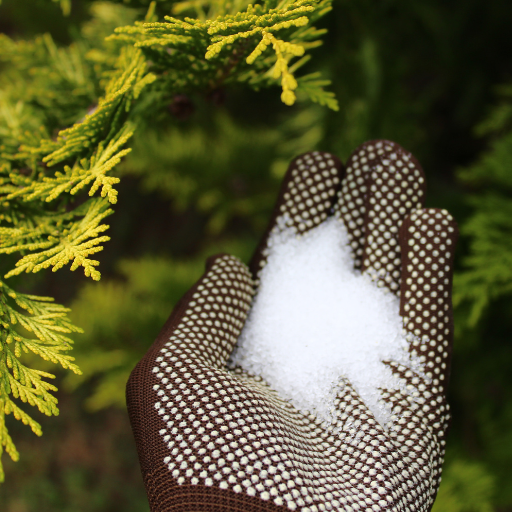
Epsom salt, chemically called magnesium sulfate, is a mineral compound that is widely used in gardening. Gardeners usually use it to provide plants with magnesium and sulfur which are two important nutrients for photosynthesis and chlorophyll production. Epsom salt can be dissolved in water and sprayed on leaves or added at the base of plants and gently worked into the ground afterwards. While many gardeners may think that it promotes plant growth and increases flowering, there must be emphasis that, it success depends much on what kind of plant needs or soil conditions.
Interpretation of Epsom Salt
Epsom salt primarily contains magnesium and sulfate ions which are used to address deficiencies pertaining to these elements in gardening. Magnesium being central atom in chlorophyll molecules is significant for photosynthesis. It aids absorption of other vital nutrients such as nitrogen and phosphorus. Sulfate contributes towards plant metabolism and enzyme function. An ideal soil magnesium level ranges from 50-120 ppm (parts per million). Excessive amounts of magnesium disrupt calcium uptake leading to imbalances.
Common rates include 1-2 tablespoons of Epsom salts per gallon for foliar sprays and 1 tablespoon per square foot when applied directly on the soil. Overusing of Epsom salts results into its accumulation within the soil thus causing stunted growth or yellowing leaves. Thus, before application you need to conduct a soil test so as to know which specific nutrient is required by your garden.
How You Can Use Epsom Salt In The Garden?
Using Epsom slats requires adhering to certain rules for best results without harming garden plants. First, you have to make sure by doing a soil test if your garden really lacks enough magnesium or sulfur. For foliar applications, dissolve 1-2 tablespoons of Epsom salt per gallon of water, then spray this solution on leaves directly. This works well, especially for roses, tomatoes, and peppers.
When applying to the soil, put 1 tablespoon of Epsom salt per square foot uniformly around plant bases. Gently work them into the ground and water thoroughly for the salt to dissolve. This method is suitable when plants are showing signs of magnesium deficiency such as yellowing leaves between veins. However, it must not be overused because it may result in negative imbalance within soil and damage to plants. Keep an eye on your garden with each subsequent application being determined by plant response and further soil tests (if any).
Misunderstandings about Epsom Salt That Prevail
Epsom salts are thought to be something like a panacea that can heal all problems of plants, but this is a fallacy. However, there are some plants, which do not require additional amounts of those elements since they already have enough. Another belief is that pests can disappear after using Epsom salts while they cannot act as deterrents against many common garden insects. Lastly, some people think that by employing Epsom salts at high rates they can greatly increase their yields and growth; however this can lead to nutrient imbalances in soil destroying plants instead of helping them grow well. So careful assessment and moderate application should prevent any potential problems with it than benefits should be sought from its use at minimum levels.
Which Plants Don’t Like Epsom Salt?
The use of Epsom salt can harm some plants more than it can do them good. For instance, plants such as sage prefer soil with low levels of magnesium and hence should normally avoid the use of Epsom salt. Furthermore, there are certain plants that thrive well in slightly acidic to neutral pH levels like azaleas and rhododendrons which may react adversely to the increased magnesium levels brought on by Epsom salts. Finally, carnivorous plants like Venus flytraps should not be given Epsom salt because these plants are adapted to living in nutrient-poor environments where additional salts can interfere with their delicate nutritional balance.
Native Plants and Epsom Salt
It is the case that native plants generally grow best when situated within soils that characterize their natural habitats while any application of Epsom salt would disrupt these conditions. An illustration is many native plants which are adapted to low nutrient soils; they could find the sudden influx of magnesium and sulfur superfluous or detrimental for their growth. This may alter the soil composition excessively leading to a disruption of this delicate balance depended upon by such species. Consequently, one is advised against using Epsom salts on indigenous flora if they want to maintain its habitat properties and ensure that it remains healthy.
Risks Associated with Potted Plants Applying Epsom Salt
Several dangers come with using epsom salt on potted plants . Overusing can lead to high concentrations of both magnesium and sulphur in soil that disturb nutrient balance thus compromising plant health. As well as increasing magnesium content necessary for chlorophyll synthesis; over application prevents calcium absorption causing problems like blossom end rot in tomatoes for instance.
Furthermore an abundance of magnesium causes disturbances in other key nutrients essentiality due its influences on them (such as potassium restriction). For example, too much magnesium limits intake of phosphorus or potassium needed for normal plant development or growth. To follow agricultural guidelines, soil magnesium levels need to be regularly tested, apportioned so that they do not exceed 25-50 ppm. In addition, potted plants’ drainage can worsen magnesium accumulation by affecting the pH and salinity of the soil. As such it is advisable to sparingly use Epsom salt only when a deficiency in its supply has been confirmed by a soil test.
Common Garden Plants that Do Not Like Epsom Salt
There are several common garden plants that are quite sensitive to Epsom salt and thus should never be subjected to it if their growth is not impaired. For instance, an azalea prefer acidic soil condition but when too much magnesium is applied this may lead to leaf burn and stunted growth. Succulents and cactus are also on this list; these plants do well in poor soils with low nutrient content hence excess Epsom salt application disrupts their delicate nutritional balance leading to root burn and general health problems. Similarly members of the protea family including banksias and grevilleas have adapted themselves to grow in phosphorus deficient soils which may adversely react against Epsom salts by showing toxic symptoms such as leaf discoloration or lack of vitality.
It is important that such plants maintain their respective nutrient and pH levels to enhance correct growth. In nature, azaleas grow best in soils having a pH range of 4.5 – 6.0; a high concentration of magnesium can tip this balance. Keeping nutrient levels low and not allowing any salt increase is vital for succulents plus cacti. Proteas have a soil Phosphorus level target of below 50 ppm, which can be pushed higher by Epsom salt beyond what these plants can tolerate. Thus gardeners should be cautious not to use Epsom salt on these delicate flowers as it interferes with their natural growth condition.
Can Epsom Salt Kill Plants?
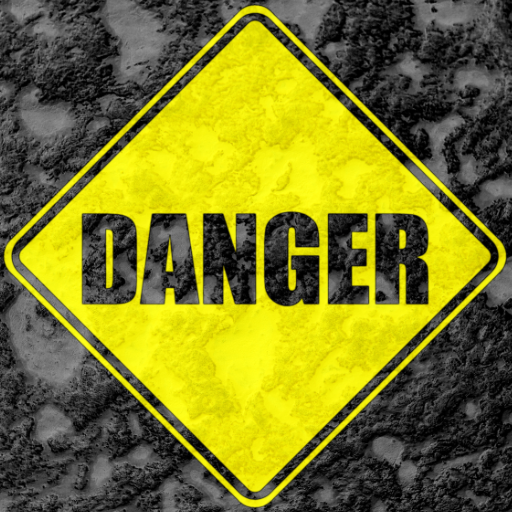
In gardening, Epsom salt is used as a common supplement, but it can also damage and even kill plants. When added in excess, this substance can lead to magnesium and sulfur overdose in the soil disturbing its nutrient balance. Such a disorder affects the plants causing scorch of leaves, injury of roots and stunting thereby slowing down their growth. This may be very dangerous for some sensitive kinds of plants which are adapted to grow in soils with poor nutrients or soils that are highly acidic. Thus, use Epsom salt cautiously and stick to advice given by specialists so as not to harm the plant.
How Much Epsom Salt is Too Much?
When using Epsom salt in gardens or homes, caution should be taken. In most cases one tablespoon full of Epsom salts poured into every gallon of water once every month is safe for various types of vegetables. To care for potted plants mix 2 tablespoons fulls of Epsom salts with one gallon of water which should then be applied after every other month. However, when using already existing gardens it’s better to put 1 cupful on each 100 square feet area of soil once per year . Never forget about your plants when you apply anything on them; stop it if there are any adverse effects like discoloration or root damage appearing.
What Are the Signs of Epsom Salt Overuse?
Frequent situations that indicate over usage of Epsom salt are noticed among affected crops. One major sign includes leaf scorch where leaf margins turn brownish due to extra Magnesium present in the soil system. Another symptom entails interveinal chlorosis whereby yellowing occurs between veins while veins themselves remain greenish. Moreover, root damages may make it hard for a plant to take up enough water plus essential elements leading to retarded growth. The toxicity levels for magnesium usually show anything above 200 ppm Mg in soil than safe limits recommended for most plants. Such are reasons that can cause damage from over usage and it is critical to take actions like watering the soil with allowance for stopping Epsom salt usage.
How Does Epsom Salt Affect Soil Composition?
Epsom salt also known as magnesium sulfate alters the composition of the soil by adding two essential elements: magnesium and sulfur. Magnesium is an important component in photosynthesis and general plant health by facilitating chlorophyll production whereas sulfur is involved in enzyme activity and protein synthesis in plants. This way, Epsom salt can be very helpful especially when there is insufficient magnesium content in acidic soils where it may be required.
Nevertheless, excessive amounts of these substances may unbalance or alter fertilizer mixtures within soil. With increased levels of magnesium, other vital nutrients such as calcium and potassium may be displaced thus interrupting their up-take by plants. According to experts’ advice, you should maintain a level of 100-150 ppm Mg in your soil so as to avoid toxicity while exceeding 200 ppm can be harmful.
Sulfur though good in moderate quantity still has potential to increase acidity when applied excessively. Regular monitoring of the soil pH must thus be practiced mainly among already acidic ones to prevent any detrimental effects on plant growth. Therefore balanced application ensures that Epsom salt helps improve its composition without causing nutrient imbalances or toxicity.
Why Do Some Plants React Negatively to Epsom Salt?
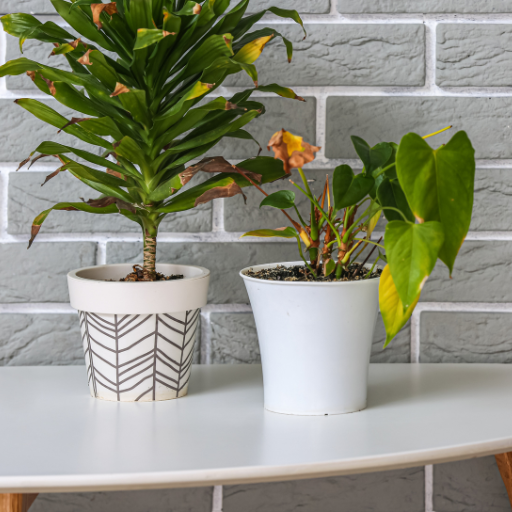
Plants may not be receptive to Epsom salt due to the potential nutrient imbalances and toxicities that it can cause. Over application of Epsom salt can result in an excess of magnesium in the soil, thereby displacing other essential nutrients such as calcium and potassium. The displacement impairs nutrient uptake, leading to deficiencies which affect plant health negatively. On top of this, sulfur from Epsom salt increases soil acidity that is detrimental to plants that prefer neutral or alkaline conditions. Signs of stress like leaf yellowing, stunted growth, and poor flowering can be observed in sensitive plants. For this reason, it is important for people to use the Epsom salt sparingly while frequently monitoring their soil nutrient levels and pH so as to evade what could be otherwise detrimental effects.
The Importance of Magnesium and Sulfur in Soil
Magnesium plays a key role in production of chlorophyll that is essential for photosynthesis and hence overall plant health. It also helps activate enzymes and synthesize proteins. Conversely, sulfur takes part in formation of amino acids, proteins, enzymes as well as vitamins. Through its participation in plant structure development and metabolism processes as well. Nevertheless both minerals need a delicate balance; excessive levels of magnesium might interfere with other vital nutrients resulting into deficient ones while too much sulfur would render soils excessively acidic. Therefore maintaining right balance along with controlling the amounts accordingly is critical towards growing healthy plants.
Possible Dangers associated with Using Epsom Salt on Plants
One major danger associated with using Epsom salts on plants is magnesium toxicity risk.This happens when magnesium accumulates highly in the soil making other necessary elements namely calcium and potassium displaced out by it through excess application.Some crops fail to take up enough nutrients because their natural absorptive capacity is hindered by unbalance leading lack-of-chlorophyll manifesting as chlorosis (yellowing leaves) or stunted growth.According to the University of Minnesota Extension, excess magnesium can also lead to reduced soil structure and aeration, ultimately impacting root health.Beyond this, the other component in Epsom salt which is sulfur can strongly influence soil acidity. This is supported by findings from the University of California Agriculture and Natural Resources that indicate root function and nutrient absorption may be impaired by excessive acid environment.
Soil pH and magnesium content are some key technical parameters to be monitored when using Epsom salts. The ease with which one can test for pH levels using a pH meter allows for plant species specific values; most plants prefer a range of 6.0-7.0. Magnesium content on soils is checked through soil tests that recommend optimal levels of between 25-50 ppm (parts per million) according to Soil Science Society of America. By maintaining those parameters, it ensures that nutrients balance as well as maintaining healthy soils.
Are There Safer Alternatives to Epsom Salt?
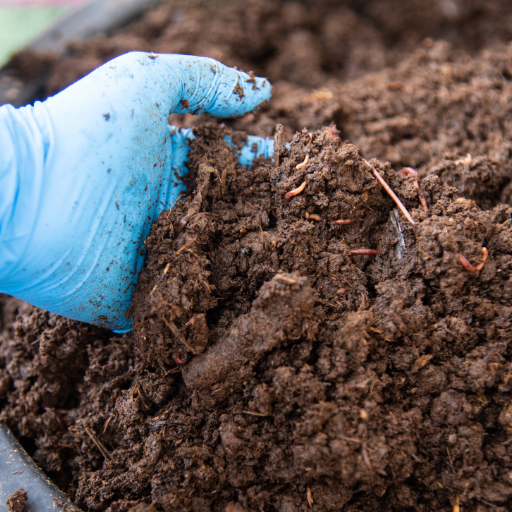
If you’re looking for ways to improve the health of your soil and give it all the nutrients it needs, there are much safer alternatives to Epsom salts. Compost is one of them and it offers a well-balanced nutrient profile that improves soil structure and supports microbial activity. Another option is kelp meal which provides potassium and trace elements without adding excessive amounts of magnesium or sulfur to the soil. Rock phosphate is another option that can provide phosphorus which is important for root development and flowering as a slow-release form. These alternatives generally tend not to cause nutrient imbalances thus they are highly recommended in enhancing long-term fertility of soils and growth of plants.
Safer Alternatives to Synthetic Fertilizers
Safer options other than using Epsom salts are also available when it comes to addressing soil health issues because synthetic fertilizers have their own shortcomings if used excessively. Animal manure, for instance, acts as an essential source of organic matter with rich nutrients which enhances soil fertility through promoting beneficial microbial activities within its pores spaces. Bone meal, commonly applied as a natural fertilizer, adds calcium and phosphorus responsible for root development hence overall plant vigor. Additionally, green manures such as cover crops—clover or alfalfa—when tilled back into the soil work on improving its nutrient content as well as the structure. The use of such natural fertilizers reduces chances where imbalance in nutrients can occur while promoting sustainable approaches in agriculture and gardening.
Compost Plus Other Soil Amendments
The breaking down of organic materials such as food waste from homes or dead plant tissue leads to compost – a substance rich in nutrients that helps enhance the quality of soil among other benefits. It assists in improving water retention, enhances microbial activity level hence making it suitable for land amendment purposes due to good structure (Noble et al 2016). There are also other forms of soil amendments including biochar, worm castings and leaf mold. Biochar helps in aerating the soil as well as retaining nutrients; also it improves water retention of the soil (Biederman & Harpole 2013). Worm castings introduce microbiota into the soil which is enriched with all necessary nutrients for plants to grow healthy. Leaf mold also help improve soil texture and moisture holding capacity (Doran et al 1999). These several amendments are combined to establish a thriving ecosystem for plants thereby promoting robust growth while making soils sustainable.
How to Find Out What Nutrients Your Plants Need
Knowing the nutritional requirements of your plants can be key to their successful development and wellbeing. Therefore, you have to learn about major nutrients that most crops demand: nitrogen (N), phosphorus (P), potassium (K) or NPK, quoting some main components of these substances. Consequently, fertilizers contain these three elements in varying proportions with nitrogen boosting growth of leaves, phosphorus supporting flowers and roots formation while potassium enhancing plant overall health.
To identify such right nutrients:
- Soil Testing: You must conduct a soil test that will reveal current nutrient figures together with its pH value from where one can either do it at home using do-it-yourself kits or send samples to laboratory for analysis. This will enable you know deficiencies and what kind of fertilizers you should purchase.
- Observation: Look out for signs indicating lack of certain minerals in your plants. A situation where leaves are turning yellow could be signifying low amounts of nitrogen whereas stunted growth with poor rooting system may indicate deficiency in phosphorous. Brown edges on the other hand might mean insufficiency levels in potassium supply.
- Plant-Specific Requirements: Be interested in finding specific nutritional needs applicable to particular kinds of plants. Species differ from each other when it comes to their demands regarding nutrition uptake levels; hence, not all vegetables require the same amount of certain minerals. For example, spinach requires high levels of nitrogen, whereas tomatoes, which are flowering plants, need much more phosphorus and potassium.
This will be implied in their garden’s robustness and well-being if you provide them with the right nutrients according to soil tests, your keen observation and plant-specific research. This individualised method is more effective and environmentally friendly in gardening.
How Can You Properly Use Epsom Salt to Benefit Your Garden?
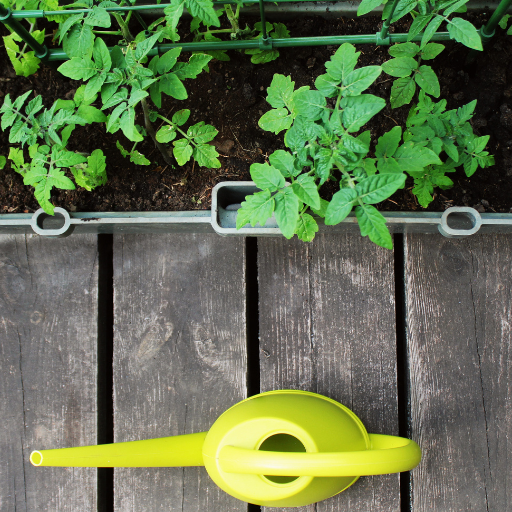
To garden properly, Epsom salt, made mostly of magnesium sulfate, offers many advantages. For effective use of Epsom salt:
- Enhance Seed Germination: To improve seed germination and strengthen cell walls, mix a tablespoon of epsom salt in one gallon of water and pour the solution on the soil before planting.
- Improve Nutrient Absorption: A spray prepared by dissolving two tablespoons of Epsom salts in a gallon of water can be applied monthly to help plants absorb nitrogen and phosphorus more effectively.
- Boost Fruit Production: Sprinkle one tablespoon of magnesium on tomatoes or peppers for every plant every 14 days. Magnesium could improve fruiting yield and taste.
- Prevent Leaf Curling: To treat curling leaves on your plants, dissolve tablespoonfuls of magnesium sulphate in 1 gallon of water. This helps correct this malady caused by a manesium deficiency.
By using these methods to incorporate Epsom Salt into your gardening routine you will enhance plant health, increase yields, and remediate specific nutritional deficiencies in your garden.
Tips for Different Plant Types
- Vegetables: When it comes to vegetables, regularly give them Epsom salt applications. Tomatoes and peppers love getting extra magnesium; so use a solution made from one tablespoonful dissolved in one gallon of water once every fortnight. This will result in better quality fruits that are also bigger. Lettuce and spinach are leafy greens that you can also apply with the same solution but do it once monthly to avoid too much deposition due to magnesia excessiveness.
- Flowers: Roses need application of Epsom salts since they are flowering plants. Use this foliar spray at two week intervals during growing season; mix one table spoonful with water galon each time you do it. Additionally, once per month spread one table spoon all over the floor around the base then pour enough water.
- House Plants: Epsom salt can be beneficial when trying to maintain your house plants’ lush foliage and vibrant blossoms. To water indoor plants dissolve 2 tablespoons of Epsom salts in a gallon of water once every month. For potted crops that might be suffering from magnesium deficiency (such as yellowing leaves or stunted growth), this treatment can do wonders for them.
The garden’s health and productivity can be maximized by practicing these instructions directed towards various kinds of plants. However, each type of plant has its own requirements, and these recommendations will facilitate provision of the essential nutrients necessary for optimal flowering and development.
Using Epsom Salt to Monitor Plant Health
Monitoring the health of your plants, using Epsom salt involves careful examination and timely actions. Regularly look at the leaves to see if they are turning yellow between the veins while the rest remain green which indicates a shortage in magnesium. Look out for any improvements after applying epsom salt; healthier plants should show greener foliage, more growth rate and blooming flowers. Be careful not use too much on your soil as it would lead to an imbalance in nutrient levels hence causing harm to your plants . Periodically test soil so that you maintain balanced amount of nutrients within it . Adjust frequency of applying Epson salt based on how fast/slow plant is growing and environmental conditions, ensure the soil is not compromised on its health.
Reference sources
- MyPlantIn:
- Summary: This online blog post discusses how ornamental plants tend to have a low resistance range with concentrated Epsom salt, although the exact impact is unproven. It emphasizes caution when using Epsom salt with ornamental plants.
- House Digest:
- Summary: The article on House Digest provides insights into specific plant types, such as succulents, tropical greens, azaleas, blueberries, and native plants, that are not fans of Epsom salt. It offers guidance on which plants to avoid using Epsom salt with in a garden setting.
- Quora:
- Summary: This source highlights the potential risks associated with using Epsom salts for certain plants. It mentions that while Epsom salts are beneficial for plants requiring magnesium, using them as a top dressing can lead to mineral deficiencies in other plants, emphasizing the importance of understanding the specific needs of different plant species.
Frequently Asked Questions (FAQs)
Q: Is Epsom salt good for all plants?
A: While Epsom salt, also known as magnesium sulfate, can be beneficial to plants with low magnesium levels, not all plants respond positively to it. Overuse can be harmful, especially in plants that don’t require much magnesium.
Q: Can using Epsom salts for plants harm my tomato plant?
A: Excessive use of Epsom salt for plants, including tomato plants, can lead to an accumulation of magnesium in the soil, which can disrupt nutrient balance and harm your plants.
Q: How much Epsom salt should I add to a gallon of water for my plants?
A: A recommended amount is usually around one to two tablespoons of Epsom salt to a gallon of water. However, specific needs can vary depending on the type of plant and its magnesium requirements.
Q: Are tropical plants and insect-eating plants like Venus flytraps harmed by Epsom salt?
A: Tropical plants and insect-eating plants often thrive in nutrient-poor soils and can be negatively affected by the concentrated amounts of Epsom salt, leading to an imbalance in soil nutrients.
Q: What’s the truth about Epsom salt in a raised garden bed?
A: The truth about using Epsom salt in a raised garden bed is that while it can temporarily improve soil magnesium levels, frequent applications are usually unnecessary and can cause long-term soil imbalances.
Q: How does Epsom salt work in the garden soil?
A: Epsom salt works by providing magnesium and sulfate, which are essential nutrients. However, it’s crucial to only use it when a soil test indicates a deficiency to avoid overapplication and potential harm.
Q: Do beds of vegetable gardens benefit from Epsom salts?
A: Vegetable garden beds may benefit from Epsom salts if the soil is deficient in magnesium. However, it’s best to use it sparingly and based on soil test results.
Q: Can epsom salt solution be harmful to the root zone of plants?
A: Yes, an overly concentrated Epsom salt solution can damage the root zone, leading to nutrient imbalances and potential toxicity.
Q: Are there plants that do not like epsom salts?
A: Yes, plants like native species adapted to low-nutrient soils, or those that do not require additional magnesium, generally do not benefit from Epsom salts and can be harmed by excessive use.
Q: Should I use epsom salt as an organic fertilizer for all my plants?
A: Epsom salt should not be used universally as an organic fertilizer for all plants. It’s better to understand the specific nutrient needs of each plant and use Epsom salt only when there is a proven magnesium deficiency.






